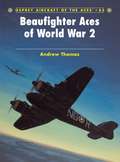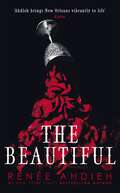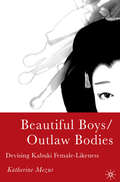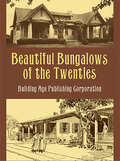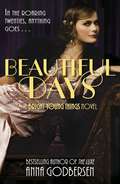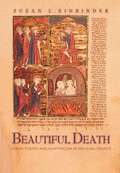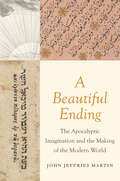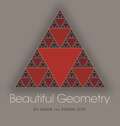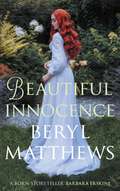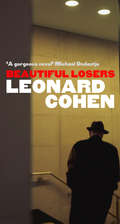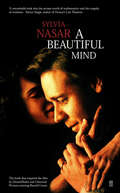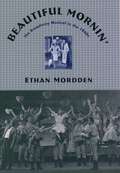- Table View
- List View
Beaufighter Aces of World War 2 (Aircraft of the Aces)
by John Weal Andrew ThomasEntering service at the end of the Battle of Britain, the pugnacious Bristol Beaufighter was deployed in numbers by Fighter Command just in time for the start of the Luftwaffe's night 'Blitz' on Britain. Flown by specialised nightfighter squadrons – several of them elite pre-war Auxiliary Air Force units – it was the first nightfighter to be equipped with an airborne radar as standard. Thus equipped, it combined the ability to 'see' the enemy at night with the devastating hitting power of four cannon and six machine guns. This book covers the exploits of the men who made ace in the Beaufighter and includes stunning original artwork together with first hand accounts of the action.
Beaufighter Aces of World War 2 (Aircraft of the Aces #65)
by John Weal Andrew ThomasEntering service at the end of the Battle of Britain, the pugnacious Bristol Beaufighter was deployed in numbers by Fighter Command just in time for the start of the Luftwaffe's night 'Blitz' on Britain. Flown by specialised nightfighter squadrons – several of them elite pre-war Auxiliary Air Force units – it was the first nightfighter to be equipped with an airborne radar as standard. Thus equipped, it combined the ability to 'see' the enemy at night with the devastating hitting power of four cannon and six machine guns. This book covers the exploits of the men who made ace in the Beaufighter and includes stunning original artwork together with first hand accounts of the action.
The Beautiful: From New York Times bestselling author of Flame in the Mist (The Beautiful)
by Renée Ahdieh#1 New York Times bestselling author Renée Ahdieh returns with a sumptuous, sultry and romantic new series set in 19th century New Orleans where vampires hide in plain sight.'Incredibly ornate [and] lush . . . nail-biting and swoony and satisfying and tense all at the same time' Sabaa TahirIn 1872, New Orleans is a city ruled by the dead.But to seventeen-year-old Celine Rousseau, it's also a safe haven after she's forced to flee her life in Paris. Quickly enraptured by the vibrant city, from its music to its extravagant soirées and even its danger, she soon becomes embroiled in the city's glitzy underworld, and particularly the group known as La Cour des Lions.But when a body is found in their lair, Celine is forced to battle her attraction for the group's enigmatic leader, Sébastien Saint Germain, and suspicions about his guilt, along with her own secrets.As more bodies are discovered, New Orleans becomes gripped by the terror of a serial killer on the loose - one who seems to have Celine in his sights. But when she finally takes matters into her own hands, she finds herself caught in the midst of an age-old feud between the darkest creatures of the night, where the price of forbidden love is her life.
Beautiful Boys/Outlaw Bodies: Devising Kabuki Female-Likeness
by K. MezurThis book is a feminist reading of gender performance and construction of the female role players, onnogata, of the Kabuki theatre. It is not limited to a 'theatre arts' focus, rather it is a mapping and close analysis of transformative genders through several historical periods in Japan (the seventeenth through the twentieth centuries).
Beautiful Bungalows of the Twenties
by Building Age Pub.This handy reference displays a variety of handsome bungalows built in the early 1920s from Maine to California. Included are illustrations of charming bungalows for a small family, a farm bungalow with a novel siding treatment, a stucco bungalow design, a chalet in Los Angeles, and other models. 43 double-page spreads of halftones and line illustrations.
A Beautiful Dare
by Natasha LesterA free short story set in the roaring twenties by the author of the deliciously evocative love story A KISS FROM MR FITZGERALD.It's 1922 in Concord, Massachusetts, a time when women are expected to do nothing more than marry as well as they can, as soon as they can. And whether she likes it or not, this is exactly what Evelyn Lockhart's conservative parents expect of her. While Evie's waiting for her handsome, wealthy neighbour Charles to propose, she has convinced her parents to let her study literature at college.But when a chance meeting leads to a day of exciting adventure, Evie begins to realise that there could be so much more in her future than marriage, if only she dared imagine it . . .If you loved THE PARIS WIFE and Z: A NOVEL OF ZELDA FIZGERALD, you will devour this short story that takes place before the full-length novel A KISS FROM MR FITZGERALD.'I loved this book.' Rachael Johns, bestselling author of THE PATTERSON GIRLS'I'm calling it, Natasha Lester is our generation's Louisa May Alcott.' Tess Woods, award-winning author of LOVE AT FIRST FLIGHT'Remarkable, intelligent and heartfelt . . . one of the best Australian fiction releases of the year.' J. F. Gibson'I absolutely adored Natasha Lester's book! What a GEM!' Sara Foster, bestselling author 'Exquisite!' Vanessa Carnevale, author and blogger
Beautiful Days
by Anna GodbersenThe fabulous sequel to Bright Young Things.Scandal, intrigue, and romance follow three beautiful friends, Letty, Cordelia and Astrid, as they each try to find love and fortune in glamorous Jazz Age New York.
Beautiful Death: Jewish Poetry and Martyrdom in Medieval France
by Susan L. EinbinderWhen Crusader armies on their way to the Holy Land attacked Jewish communities in the Rhine Valley, many Jews chose suicide over death at the hands of Christian mobs. With their defiant deaths, the medieval Jewish martyr was born. With the literary commemoration of the victims, Jewish martyrology followed. Beautiful Death examines the evolution of a long-neglected corpus of Hebrew poetry, the laments reflecting the specific conditions of Jewish life in northern France. The poems offer insight into everyday life and into the ways medieval French Jews responded to persecution. They also suggest that poetry was used to encourage resistance to intensifying pressures to convert. The educated Jewish elite in northern France was highly acculturated. Their poetry--particularly that emerging from the innovative Tosafist schools--reflects their engagement with the vernacular renaissance unfolding around them, as well as conscious and unconscious absorption of Christian popular beliefs and hagiographical conventions. At the same time, their extraordinary poems signal an increasingly harsh repudiation of Christianity's sacred symbols and beliefs. They reveal a complex relationship to Christian culture as Jews internalized elements of medieval culture even while expressing a powerful revulsion against the forms and beliefs of Christian life. This gracefully written study crosses traditional boundaries of history and literature and of Jewish and general medieval scholarship. Focusing on specific incidents of persecution and the literary commemorations they produced, it offers unique insights into the historical conditions in which these poems were written and performed.
Beautiful Death: Jewish Poetry and Martyrdom in Medieval France (PDF)
by Susan L. EinbinderWhen Crusader armies on their way to the Holy Land attacked Jewish communities in the Rhine Valley, many Jews chose suicide over death at the hands of Christian mobs. With their defiant deaths, the medieval Jewish martyr was born. With the literary commemoration of the victims, Jewish martyrology followed. Beautiful Death examines the evolution of a long-neglected corpus of Hebrew poetry, the laments reflecting the specific conditions of Jewish life in northern France. The poems offer insight into everyday life and into the ways medieval French Jews responded to persecution. They also suggest that poetry was used to encourage resistance to intensifying pressures to convert. The educated Jewish elite in northern France was highly acculturated. Their poetry--particularly that emerging from the innovative Tosafist schools--reflects their engagement with the vernacular renaissance unfolding around them, as well as conscious and unconscious absorption of Christian popular beliefs and hagiographical conventions. At the same time, their extraordinary poems signal an increasingly harsh repudiation of Christianity's sacred symbols and beliefs. They reveal a complex relationship to Christian culture as Jews internalized elements of medieval culture even while expressing a powerful revulsion against the forms and beliefs of Christian life. This gracefully written study crosses traditional boundaries of history and literature and of Jewish and general medieval scholarship. Focusing on specific incidents of persecution and the literary commemorations they produced, it offers unique insights into the historical conditions in which these poems were written and performed.
Beautiful Democracy: Aesthetics and Anarchy in a Global Era
by Russ CastronovoThe photographer and reformer Jacob Riis once wrote, “I have seen an armful of daisies keep the peace of a block better than a policeman and his club.” Riis was not alone in his belief that beauty could tame urban chaos, but are aesthetic experiences always a social good? Could aesthetics also inspire violent crime, working-class unrest, and racial murder? To answer these questions, Russ Castronovo turns to those who debated claims that art could democratize culture—civic reformers, anarchists, novelists, civil rights activists, and college professors—to reveal that beauty provides unexpected occasions for radical, even revolutionary, political thinking. Beautiful Democracy explores the intersection of beauty and violence by examining university lectures and course materials on aesthetics from a century ago along with riots, acts of domestic terrorism, magic lantern exhibitions, and other public spectacles. Philosophical aesthetics, realist novels, urban photography, and black periodicals, Castronovo argues, inspired and instigated all sorts of collective social endeavors, from the progressive nature of tenement reform to the horrors of lynching. Discussing Jane Addams, W.E.B. Du Bois, Charlie Chaplin, William Dean Howells, and Riis as aesthetic theorists in the company of Kant and Schiller, Beautiful Democracy ultimately suggests that the distance separating academic thinking and popular wisdom about social transformation is narrower than we generally suppose.
Beautiful Democracy: Aesthetics and Anarchy in a Global Era
by Russ CastronovoThe photographer and reformer Jacob Riis once wrote, “I have seen an armful of daisies keep the peace of a block better than a policeman and his club.” Riis was not alone in his belief that beauty could tame urban chaos, but are aesthetic experiences always a social good? Could aesthetics also inspire violent crime, working-class unrest, and racial murder? To answer these questions, Russ Castronovo turns to those who debated claims that art could democratize culture—civic reformers, anarchists, novelists, civil rights activists, and college professors—to reveal that beauty provides unexpected occasions for radical, even revolutionary, political thinking. Beautiful Democracy explores the intersection of beauty and violence by examining university lectures and course materials on aesthetics from a century ago along with riots, acts of domestic terrorism, magic lantern exhibitions, and other public spectacles. Philosophical aesthetics, realist novels, urban photography, and black periodicals, Castronovo argues, inspired and instigated all sorts of collective social endeavors, from the progressive nature of tenement reform to the horrors of lynching. Discussing Jane Addams, W.E.B. Du Bois, Charlie Chaplin, William Dean Howells, and Riis as aesthetic theorists in the company of Kant and Schiller, Beautiful Democracy ultimately suggests that the distance separating academic thinking and popular wisdom about social transformation is narrower than we generally suppose.
Beautiful Democracy: Aesthetics and Anarchy in a Global Era
by Russ CastronovoThe photographer and reformer Jacob Riis once wrote, “I have seen an armful of daisies keep the peace of a block better than a policeman and his club.” Riis was not alone in his belief that beauty could tame urban chaos, but are aesthetic experiences always a social good? Could aesthetics also inspire violent crime, working-class unrest, and racial murder? To answer these questions, Russ Castronovo turns to those who debated claims that art could democratize culture—civic reformers, anarchists, novelists, civil rights activists, and college professors—to reveal that beauty provides unexpected occasions for radical, even revolutionary, political thinking. Beautiful Democracy explores the intersection of beauty and violence by examining university lectures and course materials on aesthetics from a century ago along with riots, acts of domestic terrorism, magic lantern exhibitions, and other public spectacles. Philosophical aesthetics, realist novels, urban photography, and black periodicals, Castronovo argues, inspired and instigated all sorts of collective social endeavors, from the progressive nature of tenement reform to the horrors of lynching. Discussing Jane Addams, W.E.B. Du Bois, Charlie Chaplin, William Dean Howells, and Riis as aesthetic theorists in the company of Kant and Schiller, Beautiful Democracy ultimately suggests that the distance separating academic thinking and popular wisdom about social transformation is narrower than we generally suppose.
A Beautiful Ending: The Apocalyptic Imagination and the Making of the Modern World
by John Jeffries MartinAn award-winning historian’s revisionary account of the early modern world, showing how apocalyptic ideas stimulated political, religious, and intellectual transformations “A masterful synthesis of the prognostications of faith, knowledge, and politics on a global stage. Martin’s book illuminates one of the enduring themes that shaped the medieval and early modern world.”—Paula E. Findlen, Stanford University In this revelatory immersion into the apocalyptic, messianic, and millenarian ideas and movements that created the modern world, John Jeffries Martin performs a kind of empathic time travel, entering into the psyche, spirituality, and temporalities of a cast of historical actors in profound moments of discovery. He argues that religious faith—Christian, Jewish, and Muslim—did not oppose but rather fostered the making of a modern scientific spirit, buoyed along by a providential view of history and nature, and a deep conviction in the coming End of the World. Through thoughtful attention to the primary sources, Martin re‑reads the Renaissance, excavating a religious foundation at the core of even the most radical empirical thinking. Familiar icons like Ibn Khaldūn, Columbus, Isaac Luria, and Francis Bacon emerge startlingly fresh and newly gleaned, agents of a history formerly untold and of a modern world made in the image of its imminent end.
Beautiful Experiments: An Illustrated History of Experimental Science
by Philip BallFeaturing two hundred color plates, this history of the craft of scientific inquiry is as exquisite as the experiments whose stories it shares. This illustrated history of experimental science is more than just a celebration of the ingenuity that scientists and natural philosophers have used throughout the ages to study—and to change—the world. Here we see in intricate detail experiments that have, in some way or another, exhibited elegance and beauty: in their design, their conception, and their execution. Celebrated science writer Philip Ball invites readers to marvel at and admire the craftsmanship of scientific instruments and apparatus on display, from the earliest microscopes to the giant particle colliders of today. With Ball as our expert guide, we are encouraged to think carefully about what experiments are, what they mean, and how they are used. Ranging across millennia and geographies, Beautiful Experiments demonstrates why “experiment” remains a contested notion in science, while also exploring how we came to understand the way the world functions, what it contains, and where the pursuit of that understanding has brought us today.
Beautiful For Ever: Madame Rachel of Bond Street - Cosmetician, Con-Artist and Blackmailer
by Helen RappaportMadame Rachel had everything: a Mayfair address, the title of 'purveyor to Her Majesty the Queen', a shop full of exotic, expensive creams and potions. Her clientele were aristocratic, rich - and gullible. This is the true story of Madame Rachel who began life as a poor fish fryer in a disease-ridden, grubby corner of Victorian London. She ended up with a shop in New Bond Street, where her wealthy clients came in their droves, lured by the promise of eternal beauty. What they found there was a con-woman and fraudster who made a career out of lies, treachery and the desperate hopes of women wanting to be 'beautiful for ever'. Beautiful For Ever is a thrilling tale of love affairs, scandal, blackmail, high-profile court cases, suicide and fraud, with the extraordinary Madame Rachel right at the centre of it all.
Beautiful Geometry
by Eli Maor Eugen JostIf you've ever thought that mathematics and art don't mix, this stunning visual history of geometry will change your mind. As much a work of art as a book about mathematics, Beautiful Geometry presents more than sixty exquisite color plates illustrating a wide range of geometric patterns and theorems, accompanied by brief accounts of the fascinating history and people behind each. With artwork by Swiss artist Eugen Jost and text by math historian Eli Maor, this unique celebration of geometry covers numerous subjects, from straightedge-and-compass constructions to intriguing configurations involving infinity. The result is a delightful and informative illustrated tour through the 2,500-year-old history of one of the most important branches of mathematics.
Beautiful Geometry (PDF)
by Eli Maor Eugen JostIf you've ever thought that mathematics and art don't mix, this stunning visual history of geometry will change your mind. As much a work of art as a book about mathematics, Beautiful Geometry presents more than sixty exquisite color plates illustrating a wide range of geometric patterns and theorems, accompanied by brief accounts of the fascinating history and people behind each. With artwork by Swiss artist Eugen Jost and text by math historian Eli Maor, this unique celebration of geometry covers numerous subjects, from straightedge-and-compass constructions to intriguing configurations involving infinity. The result is a delightful and informative illustrated tour through the 2,500-year-old history of one of the most important branches of mathematics.
Beautiful Imperialist: China Perceives America, 1972-1990
by David ShambaughFrom President Nixon's historic visit to China in 1972 to the aftermath of the Tiananmen tragedy, this book examines the changing perceptions of the United States articulated by China's "America Watchers," whose occupation is to interpret the "beautiful imperialist" for China's elite and public. While other studies have looked at the behavioral history of U.S.-China relations, this is the first to probe the perceptual dimension.
Beautiful Imperialist: China Perceives America, 1972-1990
by David ShambaughFrom President Nixon's historic visit to China in 1972 to the aftermath of the Tiananmen tragedy, this book examines the changing perceptions of the United States articulated by China's "America Watchers," whose occupation is to interpret the "beautiful imperialist" for China's elite and public. While other studies have looked at the behavioral history of U.S.-China relations, this is the first to probe the perceptual dimension.
Beautiful Imperialist: China Perceives America, 1972-1990
by David ShambaughFrom President Nixon's historic visit to China in 1972 to the aftermath of the Tiananmen tragedy, this book examines the changing perceptions of the United States articulated by China's "America Watchers," whose occupation is to interpret the "beautiful imperialist" for China's elite and public. While other studies have looked at the behavioral history of U.S.-China relations, this is the first to probe the perceptual dimension.
Beautiful Innocence: The heart-warming Victorian saga of triumph over adversity
by Beryl MatthewsLondon, 1900. Hester Stanmore watches in disbelief as the court declares her attacker 'not guilty', and the room erupts into chaos. The man in the dock is being congratulated as if he were a hero, but she has seen the madness in his eyes when he had attacked her. In a rage he had beaten her senseless and left her for dead. It was only her strength that allowed her to survive.Hester was determined to bring him to justice, but what would happen now? As she endeavours to pick up the pieces of her life, Hester meets Daniel Hansen, and perhaps she will find the happy ending she justly deserves .
A Beautiful Lie
by Irfan MasterAn extraordinarily rich debut novel, set in India in 1947 at the time of Partition. Although the backdrop is this key event in Indian history, the novel is even more far-reaching, touching on the importance of tolerance, love and family. The main character is Bilal, a boy determined to protect his dying father from the news of Partition - news that he knows will break his father's heart. With great spirit and determination, and with the help of his good friends, Bilal persuades others to collude with him in this deception, even printing false pages of the local newspaper to hide the ravages of unrest from his father. All that Bilal wants is for his father to die in peace. But that means Bilal has a very complicated relationship with the truth...
Beautiful Losers
by Leonard CohenOne of the best-known experimental novels of the 1960s, this uninhibited tale centres on the hapless members of a love triangle, and their sexual obsession and shared fascination with a mythic saint.
A Beautiful Mind (Shooting Script Ser.)
by Sylvia NasarA Beautiful Mind is Sylvia Nasar's award-winning biography about the mystery of the human mind, the triumph over incredible adversity, and the healing power of love.At the age of thirty-one, John Nash, mathematical genius, suffered a devastating breakdown and was diagnosed with schizophrenia. Yet after decades of leading a ghost-like existence, he was to re-emerge to win a Nobel Prize and world acclaim. A Beautiful Mind has inspired the Oscar-winning film directed by Ron Howard and featuring Russell Crowe in the lead role of John Nash.
Beautiful Mornin': The Broadway Musical in the 1940s
by Ethan Mordden"Music and girls are the soul of musical comedy," one critic wrote, early in the 1940s. But this was the age that wanted more than melody and kickline form its musical shows. The form had been running on empty for too long, as a formula for the assembly of spare parts--star comics, generic love songs, rumba dancers, Ethel Merman. If Rodgers and Hammerstein hadn't existed, Broadway would have had to invent them; and Oklahoma! and Carousel came along just in time to announce the New Formula for Writing Musicals: Don't have a formula. Instead, start with strong characters and atmosphere: Oklahoma!'s murderous romantic triangle set against a frontier society that has to learn what democracy is in order to deserve it; or Carousel's dysfunctional family seen in the context of class and gender war. With the vitality and occasionally outrageous humor that Ethan Mordden's readers take for granted, the author ranges through the decade's classics--Pal Joey, Lady in the Dark, On the Town, Annie Get Your Gun, Phinian's Rainbow, Brigadoon, Kiss Me, Kate, South Pacific. He also covers illuminating trivia--the spy thriller The Lady Comes Across, whose star got so into her role that she suffered paranoid hallucinations and had to be hospitalized; the smutty Follow the Girls, damned as "burlesque with a playbill" yet closing as the longest-run musical in Broadway history; Lute Song, in which Mary Martin and Nancy Reagan were Chinese; and the first "concept" musicals, Allegro and Love Life. Amid the fun, something revolutionary occurs. The 1920s created the musical and the 1930s gave it politics. In the 1940s, it found its soul.
